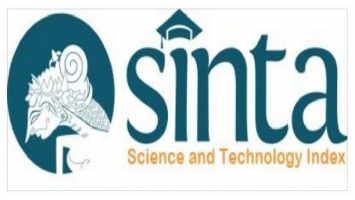ANALISIS SEMIOTIK PADA TEKS MANTRA RUWAT MURWAKALA SERTA RELEVANSINNYA SEBAGAI MATERI AJAR PUISI JAWA DI SEKOLAH MENENGAH ATAS
Abstract
The purpose of this study is to describe (1) the story that underlies the birth of the Ruwatan murwakala customs; (2) semiotic analysis in the text of the ruwat Murwakala mantra; and (3) how the relevance of ruwat murwakala mantra as a teaching material of Javanese poetry in Senior High School. The research is the descriptive qualitative research using oral literary approach. The data of this research was written data which was mantra ruwat murwakala texs. Sources of data used are informants, document of the ruwatan murwakala story places, and events. Sampling technique used is purposive sampling and simple random sampling. Technique of collecting data used is technique of record, recording, interview, observation, and document analysis. Data validity is obtained through theory trianguation and source triangulation. The data analysis technique was interactive analysis. The research procedure were arrangement, implementation, and report composing. Based on this research it can be concluded: (1) the story that underlies the birth of ruwatan murwakala custom originated from the habit of the Javanese who often connect an event with other events that are considered as an impact of an event. Therefore, the Javanese society has a variety of assumptions that became the basis of a ritual to avoid by mistakes that have been made, the ceremony or ritual was then called the term ruwatan. The category of people which have to be ruwat is the bocah sukêrta. The ruwatan ceremony was led by a dhalang ruwat who was also in charge of performing leather puppets with murwakala plays; (2) the semiotic analysis performed on spells is an analysis of icons, indices, and symbols. it was Found seven mantras containing icons, while nine spells do not contain icons. it is Found fourteen mantras containing the index, while the two spells do not contain the index. it is Found two mantras containing symbols, while fourteen mantras do not contain symbols; (3) The mantra text taken from mantra ruwat murwakal can be used as learning material of Javanese language in SMA. The feasibility of mantra ruwat murwakala is used as teaching material because it is in accordance with the basic competency in Education Unit Level Curriculum (KTSP). In addition, the text of the mantra ruwat murwakala is written using the ancient Javanese language and the middle Java language, so it will add the vocabulary of the Java language owned by the students.
Keywords
Full Text:
PDFReferences
Amir, A. (2013). Sastra Lisan Indonesia. Yogyakarta: Andi. Berger, A. A. (2010). Pengantar Semiotika Tanda-tanda dalam Kebudayaan Kontemporer. Yogyakarta : Penerbit Tiara Wacana. Danandjaja, J. (2000). Folklor Indonesia: Ilmu gosip dongeng dan lain-lain. Jakarta: Pustaka Utama. Danesi, M. (2012). Pesan, Tanda dan Makna. Yogyakarta: Jalasutra. Moleong, L. J. (2014). Metode Penelitian Kualitatif (edisi Revisi). Bandung: PT. Remaja Rosdakarya. Miles, M. B. & Huberman , M. (2014). Analisis Data Kualitatif: Buku Sumber Tentang Metode-Metode Baru. Penerjemah: Tjetjep Rohendi Rohidi. Jakarta: Universitas Indonesia (UI-Press). Patriantoro. (2013). Mantra Bedendol pada Upacara Basehatn Suku Dayak Banana. FONOLINGUA, 21(1) hal. 29-46. Rahmat. (2015). Makna Leksikal dan Makna Gramatikal: Ruwata, Sukerta, dan Murwakala. LITERASI, 5(2) hal. 150-157. Suryosubroto. (2009). Proses Belajar Mengajar di Sekolah. Jakarta: Rineka Cipta.
Refbacks
- There are currently no refbacks.









